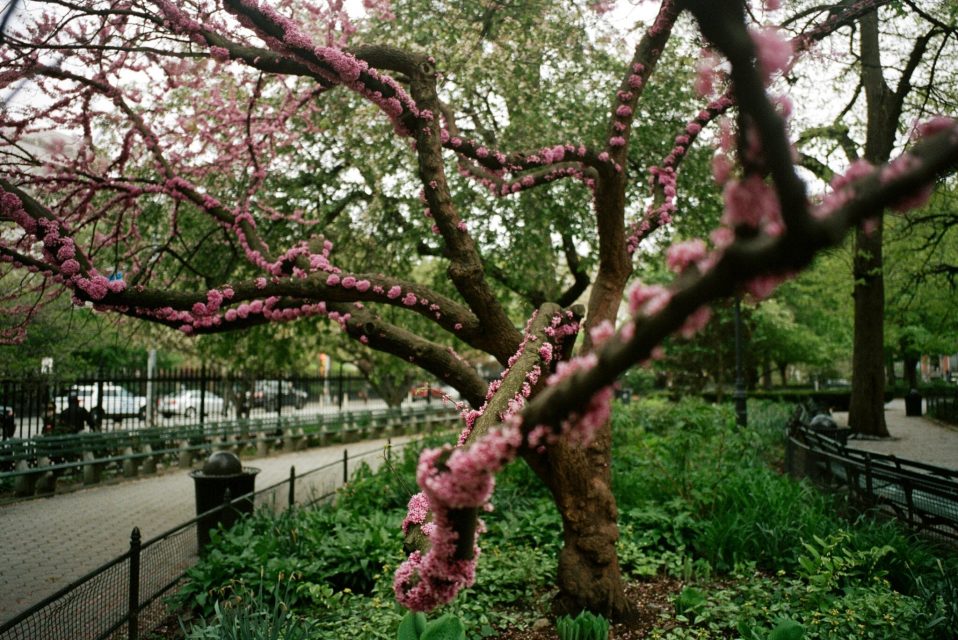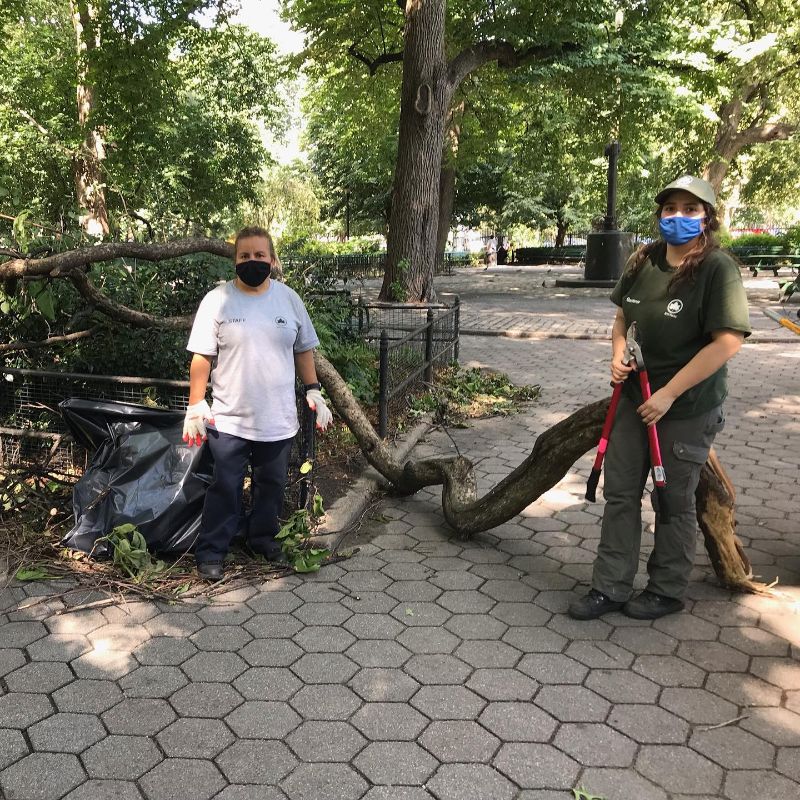Multi-colored and Multi-meaninged
Hydrangea flowers belong to the genus Hydrangea, which consists of about 70 species native to Asia and the Americas. Its name is derived from the Greek for “water vessel” because of the shape of its seed capsules and the overall shape of the plant, which is reminiscent of a water pitcher. Like its name implies, hydrangeas require plenty of water and benefit from consistent moisture. They grow from early spring to late fall in partial sunlight, adding elegant beauty to public and private spaces.
Hydrangeas develop in flowerheads, which typically contain two types of flowers: small non-showy flowers in the center or interior of the flowerhead, and large, showy flowers with colorful sepals that often extend in a ring. The flowers vary in color and come in white, blues, pinks, and purples. The color is heavily affected by the pH of the soil and the presence of aluminum ions, where more acidic soil results in bluer blooms and more basic soil results in pinker blooms. As a result, the flowers on the plant can change color with each bloom.
The history of hydrangeas is filled with many meanings and uses. The earliest of its fossils were found in the western United States and Alaska and date to nearly 60 million years ago. However, most hydrangeas are believed to have originated in Japan, where they hold considerable cultural significance. They are mentioned in eighth-century poems, are hallmarks of the rainy season and onset of summer, appear as motifs on textiles and common items, and are celebrated in festivals. They symbolize heartfelt emotion, understanding, and apology, and the changing of colors is thought to represent the impermanence of the human condition.
In contrast, hydrangeas held negative connotations in Europe, where they first arrived from North America and then from Japan and China in the 18th-century. They were associated with arrogance and boastfulness because the plant produced many flowers but few seeds. English men in the 19th-century would even send hydrangeas to women who rejected them, accusing them of frigidity. They believed this plant was especially unlucky for young ladies because it kept them from finding a suitable husband. If a household allowed hydrangeas to grow on their property, it was thought to be a curse that would result in the daughters of the house living their lives as lonely spinsters.
Ironically, today hydrangeas are some of the most popular wedding flowers, and are used to celebrate the joining of individuals and families. Their vibrant blooms add splashes of color in our park and the abundant rain allows them to remain healthy. Their changing of colors from blue to pink and back calls to mind the fairies from Disney’s Sleeping Beauty arguing over the color of Aurora’s dress. Blue or pink? Sometimes it’s hard to make up our minds. So why not have both?


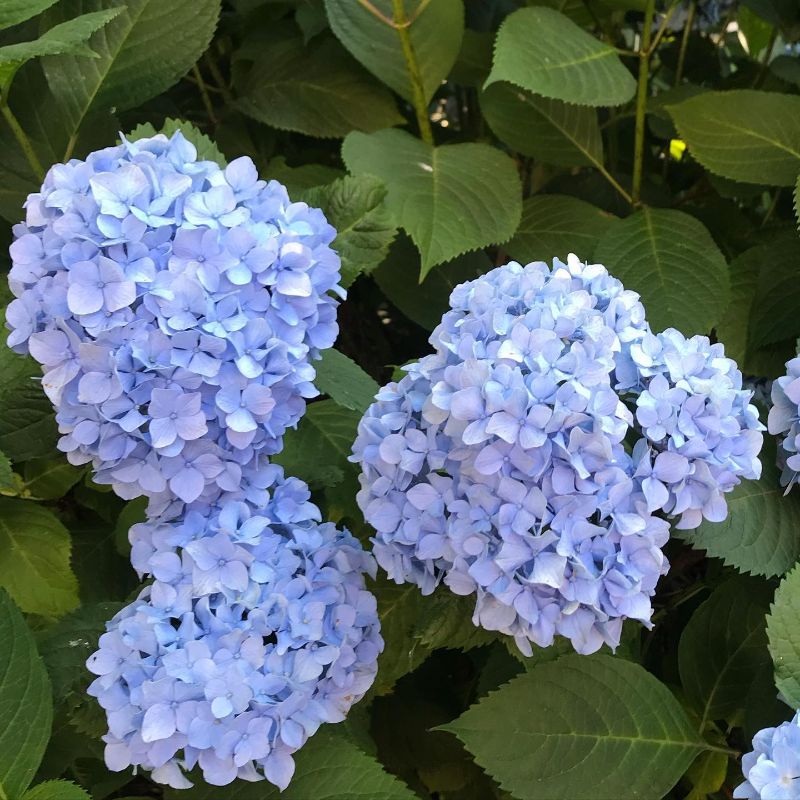
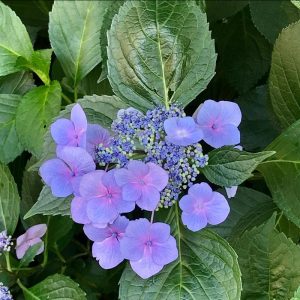
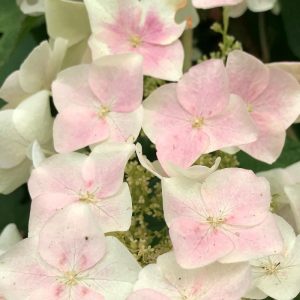
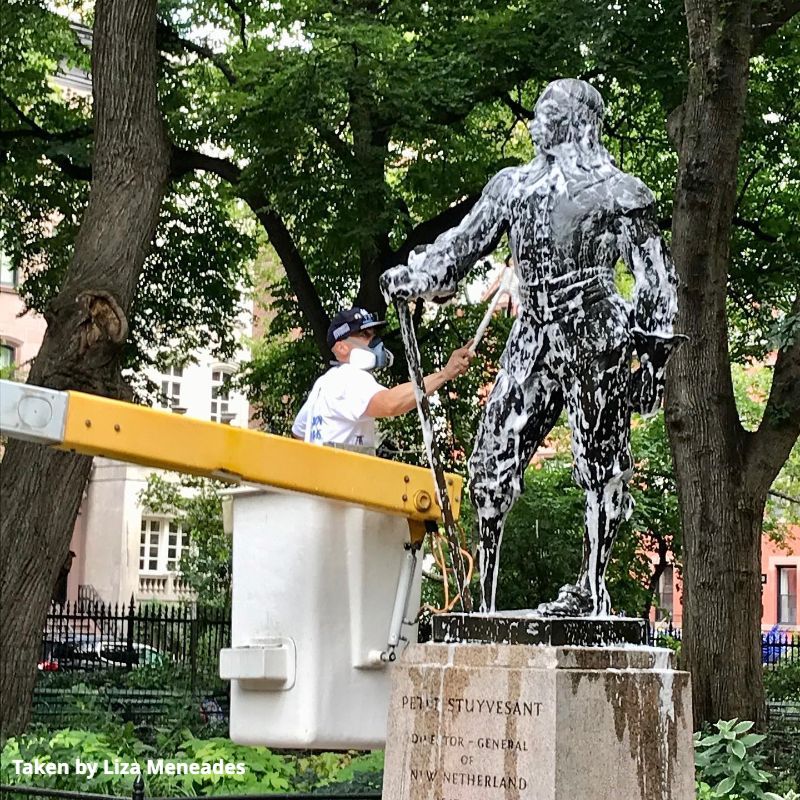
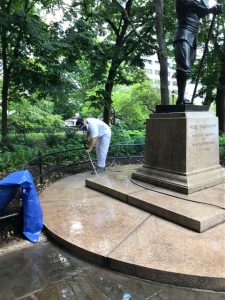 Gertrude Vanderbilt Whitney, sculptor of the Peter Stuyvesant statue, was one of only a handful of female sculptors in early 20th-century New York City. She devoted herself to the advancement of women in art, supporting and exhibiting in women-only shows and ensuring that women were included in mixed shows. She is perhaps most well known for founding the Whitney Museum of American Art in 1931, after The Metropolitan Museum of Art refused her donation of 700 modern works of American art because it believed that both America and the modern world had little to offer artistically. A trailblazer, she believed the creative and artistic output the American people, both men and women, were worthy of being exhibited and celebrated.
Gertrude Vanderbilt Whitney, sculptor of the Peter Stuyvesant statue, was one of only a handful of female sculptors in early 20th-century New York City. She devoted herself to the advancement of women in art, supporting and exhibiting in women-only shows and ensuring that women were included in mixed shows. She is perhaps most well known for founding the Whitney Museum of American Art in 1931, after The Metropolitan Museum of Art refused her donation of 700 modern works of American art because it believed that both America and the modern world had little to offer artistically. A trailblazer, she believed the creative and artistic output the American people, both men and women, were worthy of being exhibited and celebrated.



